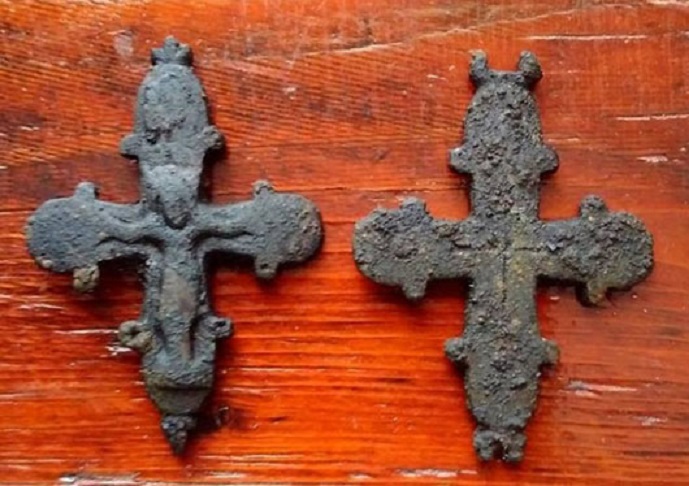

“Our archaeologists have found an iron-bound cannon carriage (a special mobile unit used to transport an artillery piece) dating back to the Cossack period (16th-18th centuries). It was meant to transport large-calibre artillery weighing about 2-3 tons. This is a sensational find, because, in the 40 years of underwater archeology, such objects have never been found near Khortytsia Island. Moreover, as far as I know, no such carriages of this period are exhibited in Ukrainian museums. Hundreds of guns have survived, but there aren’t so many gun carriages, even in European museums.” said the Director of the Khortytsia National Reserve, Maksym Ostapenko.
The gun carriage was discovered at a depth of nine metres. After preliminary studies, the archaeologists removed the mud sediment from the carriage, and on November 23, raised it from the bottom of the Dnipro River. The carriage will be transported to the restoration hangar of the Museum of Navigation, where scientists will work to clean and restore it.
“It’s very difficult to say why and how the carriage ended up here. The territories near Khortytsia Island saw the passing of many large armies and ships. Perhaps this carriage landed at the bottom of the river after a shipwreck. Before being transported by water, the carriages were usually disassembled. We couldn’t find the wheels anywhere in the water.
This cannon carriage is truly a unique find! ” said Ostapenko.
The Director of hydroarchaeological team Valeriy Nefedov noted that the carriage is in surprisingly good condition.
“Due to the fact that the carriage was mired in mud sediment, the metal and wooden elements are well preserved. We plan to study them in detail. There are even traces of paint in some places. Therefore, we can say that this carriage was painted red.”

According to Maksym Ostapenko, this archaeological expedition and discovery was made possible thanks to a generous local sponsor.
“We were able to carry out this project thanks to the financial support provided by PJSC Zaporizhstal, an important local metallurgical plant, which allocated a large grant for the underwater part of the expedition: rental of waterborne vehicles, purchase of required tools and equipment, etc.,” said Ostapenko, and thanked the company, which regularly helps the Khortytsia National Reserve to implement archaeological and other projects.
Employees of the Regional State Emergency Service took part in organizing the work.
Towards the end of November, the archaeological team unearthed the remains of a Cossack cantonment (temporary military or winter encampment).






















